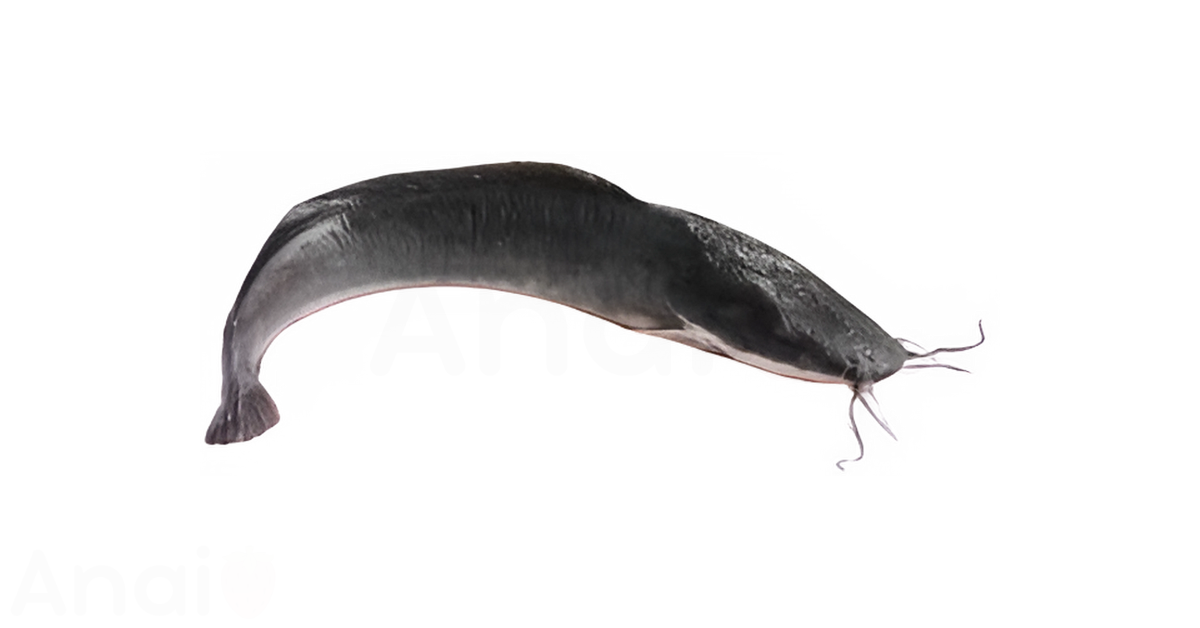Is Catfish Good for You?
Yes, catfish is a remarkably healthy fish. It boasts an impressive nutritional profile that is beneficial for a balanced diet. A single serving is low in calories and sodium yet packed with high-quality protein, essential vitamins, and healthy fats. A 3.5-ounce (100-gram) serving of fresh catfish contains only 105 calories and 2.9 grams of fat. The Food and Drug Administration (FDA) even lists catfish among the best seafood choices due to its low mercury content (Snyder, 2023).
This article offers a comprehensive look at catfish, with all information updated as of December 2025. We will explore the 12 functional health benefits of catfish, its detailed nutrition facts, potential risks and side effects, and suitable substitutes. Additionally, we will cover popular catfish diets, proper storage tips, 8 remarkable home remedies, the role of catfish in weight management, and its use for specific health conditions.
12 Functional Health Benefits of Catfish
Catfish is more than just an affordable and versatile menu item; it’s a nutrient-dense food that supports overall health. Each health benefit listed here is supported by scientific data and published research, confirming catfish’s place in a healthy eating plan.
1. Excellent Source of Lean Protein
Protein is a vital macronutrient that serves as a primary energy source and is essential for building and repairing tissues and muscles. Catfish provides an exceptional amount of protein relative to its calorie count. A single 3.5-ounce (100-gram) serving offers 18 grams of protein, which is 32–39% of your daily protein needs, for only 105 calories (Snyder, 2023). This high protein content can also aid in weight management by increasing feelings of fullness.
2. Rich in Heart-Healthy Omega-3s
Catfish is a good source of omega-3 fatty acids, which are crucial for brain health and are linked to improved heart health and skeletal muscle strength. Your body cannot produce these fats, so you must get them from your diet. One 3.5-ounce (100-gram) fillet of catfish provides 237 mg of omega-3s (Selemin, 2024). Research has shown a direct link between fish consumption and reduced mortality risk, with a 7% reduction in the chance of death for every 200 mg of omega-3s consumed daily (Joseph, 2022).
3. Packed With Vitamin B12
Vitamin B12 is critical for nerve function, DNA production, and the prevention of anemia, yet many people have a deficiency in this essential nutrient. Catfish is a powerhouse of vitamin B12. A 3.5-ounce (100-gram) serving of catfish delivers an incredible 121% of the Daily Value (DV) for vitamin B12 (Spandana, n.d). Maintaining adequate B12 levels is linked to improved mental health and protection against heart disease.
4. Low in Calories and Fat
For those managing their weight or simply watching their caloric intake, catfish is an excellent choice. It is naturally low in calories and fat without sacrificing other key nutrients. A standard 3.5-ounce serving contains just 105 calories and 2.9 grams of fat, making it a leaner option than many other proteins (Snyder, 2023). For comparison, the same serving size of salmon has over 230 calories.
5. Contains Extremely Low Levels of Mercury
One of the biggest concerns with seafood is its potential for mercury contamination. However, catfish is consistently ranked as one of the safest fish to eat. The FDA has conducted extensive research and found that catfish has a mean mercury concentration of just 0.024 parts per million (PPM) (Joseph, 2022). This is significantly lower than many other popular fish, such as albacore tuna (0.350 PPM) and swordfish (0.995 PPM).
6. Significant Source of Vitamin D
Vitamin D, often called the “sunshine vitamin,” is not found in many foods, but wild-caught catfish is an exceptional source. This vitamin is crucial for immune function and helps the body absorb calcium, which is vital for bone health. A single 143-gram fillet of wild catfish provides an astonishing 722 IU of Vitamin D, which is 181% of the DV (Lama, n.d). Note that farm-raised catfish contains significantly less Vitamin D.
7. High in Phosphorus
Phosphorus is a mineral that plays a major role in forming strong bones and teeth and helps manage how your body stores and uses energy. Catfish provides a healthy dose of this essential mineral. You can get 24% of the DV for phosphorus from a 3.5-ounce (100-gram) serving of catfish (Joseph, 2022).
8. Supplies Essential Selenium
Selenium is a powerful antioxidant that protects against cell damage and infections and plays a crucial role in reproduction and thyroid hormone metabolism. Catfish is a great way to meet your daily selenium needs. A 3.5-ounce serving provides 26% of the DV for selenium (Lama, n.d), helping to support a healthy immune system.
9. Provides a Boost of Thiamine
Thiamine, or vitamin B1, is an essential nutrient that helps convert food into energy and is critical for the health of the nervous system. A fillet of channel catfish (about 159 grams) contains 38% of the DV for thiamine (Snyder, 2023). This makes it a valuable food for maintaining cellular function and a healthy metabolism.
10. Good Source of Potassium
Potassium is an electrolyte that is vital for heart function and plays a key role in muscle contractions and nerve signals. A 3.5-ounce serving of catfish contains 19% of the DV for potassium (Spandana, n.d), contributing to the maintenance of healthy blood pressure levels.
11. Promotes Brain Health
The omega-3 fatty acids in catfish are renowned for their role in brain health. Although more research is needed, studies suggest these fatty acids may help treat neurological and mental conditions like memory loss and depression (Joseph, 2022). The B-vitamins in catfish, especially B12, also contribute to improved mental function and protection against age-related cognitive decline.
12. Supports a Healthy Immune System
The combination of vitamins and minerals in catfish works to support a robust immune system. The high level of Vitamin D in wild-caught catfish is particularly important for regulating immune responses. Additionally, the protein content is crucial for repairing tissues and creating the antibodies that fight off infections (Lama, n.d).
Catfish Nutrition Facts
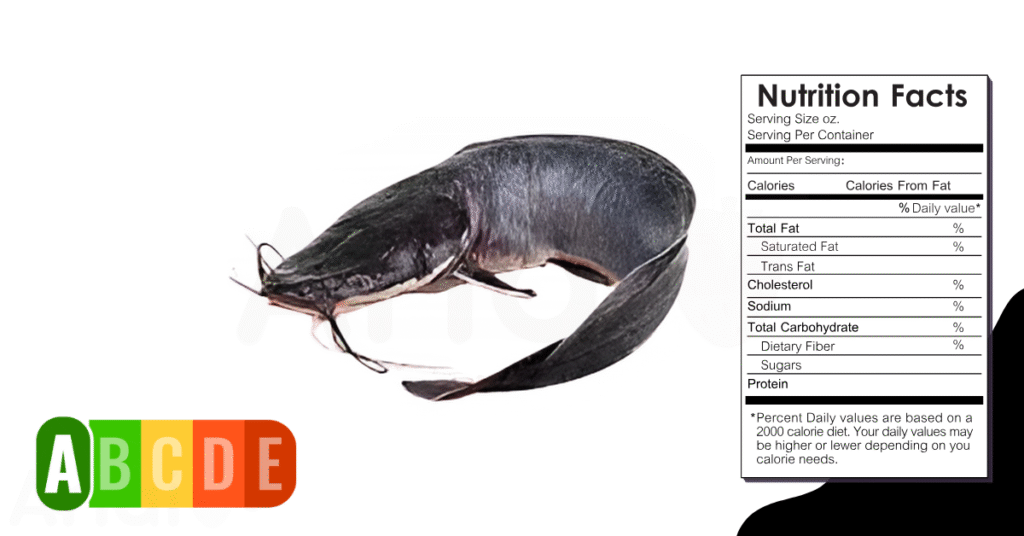
The impressive health benefits of catfish are best understood by looking at its detailed nutritional composition. This can be found in the table below.
Catfish nutrition table
A single serving of catfish offers a wealth of essential nutrients. The table below outlines the nutritional profile for both a standard 143-gram fillet (about 5 ounces) and a 100-gram (3.5-ounce) portion, based on data from the USDA Food and Nutrient Database.
| Nutrient | Per Serving (143 g) | DRI % (Serving) | Per 100 grams | DRI % (100 g) |
|---|---|---|---|---|
| Calories | 150 kcal | 7.5% | 105 kcal | 5.3% |
| Protein | 26.4 g | 53% | 18.5 g | 37% |
| Carbs | 0 g | 0% | 0 g | 0% |
| Total Fat | 4.1 g | 5% | 2.9 g | 4% |
| Cholesterol | 94 mg | 31% | 66 mg | 22% |
How many calories are in catfish?
Catfish is a low-calorie food. A standard 100-gram (3.5-ounce) serving contains only 105 calories, which is just over 5% of the recommended daily intake for a 2000-calorie diet. A larger 143-gram fillet contains about 150 calories.
To burn off the 140 calories from a similar-sized portion, you would need to walk for approximately 39 minutes, run for 14 minutes, or bicycle for 20 minutes (Nutritionix, n.d.). Its low calorie count makes it an excellent choice for weight management.
How much protein is in catfish?
Catfish is exceptionally protein-dense. A 100-gram serving packs 18.5 grams of protein, meeting 37% of your daily needs. A single 143-gram fillet provides 26.4 grams of high-quality protein, which accounts for an impressive 53% of the Daily Recommended Intake (DRI). This makes catfish a highly efficient source for building muscle and supporting bodily functions.
How many carbs are in catfish?
Catfish contains zero carbohydrates. This makes it an ideal food for low-carb and ketogenic diets. Its lack of carbs and sugar means it does not impact blood sugar levels.
How much fat is in catfish?
Catfish is a lean fish, containing only 2.9 grams of total fat per 100g. While it is low in fat, the fats it does contain are primarily healthy, unsaturated fats. The fish contains more beneficial omega-3 and omega-6 fatty acids than harmful saturated fats.
| Fat Type | Per 143g Fillet | Per 100g |
|---|---|---|
| Total Fat | 4.08 g | 2.9 g |
| Saturated Fat | 1.06 g | 1.6 g |
| Monounsaturated Fat | 1.57 g | 3.1 g |
| Polyunsaturated Fat | 0.91 g | 1.4 g |
Is catfish high in cholesterol?
Catfish contains a moderate amount of cholesterol. A 100-gram serving has 66 mg of cholesterol, which is 22% of the DRI. While individuals with certain health conditions may need to monitor cholesterol intake, for most people, the dietary cholesterol in catfish is not a concern, especially given its low saturated fat content.
Minerals in catfish
Catfish is a good source of several essential minerals that are vital for bodily functions, from bone health to immune support.
| Mineral | Amount (per 143g fillet) | % DRI | Health Benefit |
|---|---|---|---|
| Phosphorus | 434.7 mg | 43.5% | Key for bone/teeth formation and energy metabolism. |
| Selenium | 20.45 mcg | 29.2% | Acts as an antioxidant, supports thyroid function. |
| Potassium | 599.17 mg | 17.1% | Regulates fluid balance, nerve signals, and blood pressure. |
The mineral profile of catfish is impressive for a lean fish. It is particularly rich in phosphorus, providing nearly half the daily requirement in a single fillet. It is also a significant source of selenium and potassium.
Vitamins in catfish
The vitamin content of catfish is one of its standout nutritional features, especially its high levels of Vitamin D (in wild-caught varieties) and Vitamin B12.
| Vitamin | Amount (per 143g fillet) | % DRI | Health Benefit |
|---|---|---|---|
| Vitamin D | 722 IU | 181% | Crucial for bone health and immune system function. |
| Vitamin B12 | 4.15 mcg | 69.1% | Essential for nerve function and red blood cell formation. |
| Thiamine (B1) | 0.32 mg | 21.6% | Helps convert food into energy. |
A single fillet of wild catfish offers a massive dose of Vitamin D, far exceeding the daily requirement. It also provides more than two-thirds of the necessary Vitamin B12. It’s important to note that farm-raised catfish contains virtually no Vitamin D, so choosing wild-caught is key to obtaining this benefit.
Catfish Risks and Side Effects
While catfish is a healthy choice for most people, there are a few potential risks to consider. Like any fish, it can cause allergic reactions in sensitive individuals, with symptoms ranging from mild itching to severe anaphylaxis. Those with fish allergies should avoid catfish entirely.
The main nutritional concern revolves around its fatty acid profile. Catfish contains a higher ratio of omega-6 to omega-3 fatty acids. While both are essential, Western diets are often too high in omega-6s, which some studies suggest can be pro-inflammatory and may worsen conditions like inflammatory bowel disease (Oluseye, 2022). For this reason, medical experts sometimes advise those with inflammatory conditions like arthritis or heart disease to limit their intake.
Contamination is another consideration. Although catfish is one of the fish with the lowest levels of mercury, there can be concerns about chemicals or antibiotics used in some overseas fish farms. To minimize risk, opt for U.S.-farmed or wild-caught catfish, which are raised under stricter regulations. A 2012 U.S Government Accountability Office (GAO) report noted historical concerns about Salmonella, but these were based on limited data from before modern safety regulations were implemented (Shames, 2012).
Debunking myths about catfish
Myth: Catfish are dirty bottom-feeders that taste like mud.
Fact: While wild catfish are indeed bottom-feeders, the vast majority of catfish sold in the U.S. is farm-raised. These fish are raised in controlled freshwater ponds and fed a high-protein diet of grains like soy and corn. This controlled environment and diet result in a consistently clean, mild, and slightly sweet flavor, free from the “muddy” taste some associate with wild-caught bottom-feeders.
Myth: Catfish is an unhealthy, fatty fish to be avoided.
Fact: This is incorrect. Nutritional data clearly shows that catfish is a lean protein. A 100-gram serving has only 105 calories and about 3 grams of fat, most of which is healthy unsaturated fat. The idea that it is “overloaded with bad fat” is a significant exaggeration. While the omega-6 content is a valid point of consideration for some, its overall low-fat profile makes it a healthy choice for most people.
Catfish Substitutes
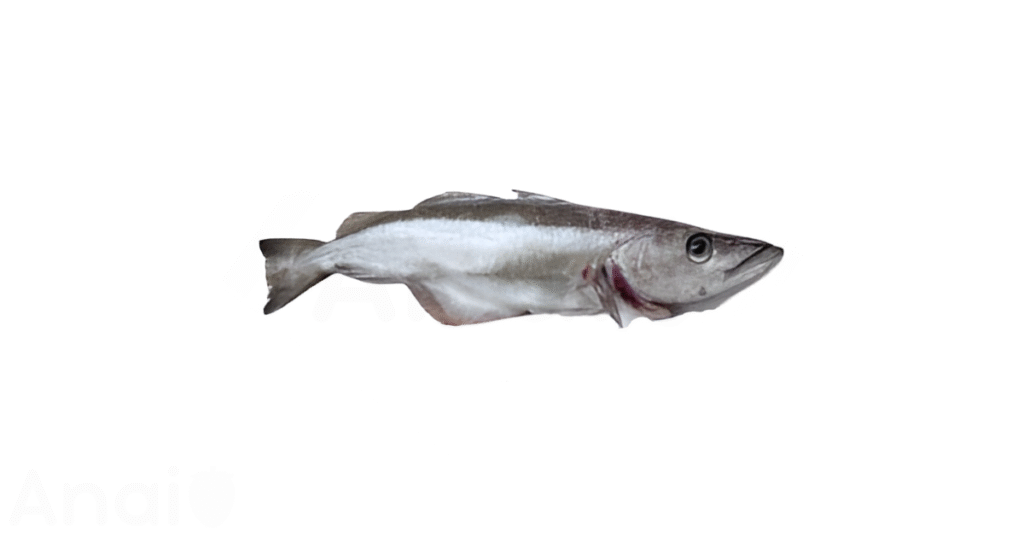
If catfish isn’t available or you’re looking for a change, several other white fish make excellent substitutes. They share a similar mild flavor and flaky texture, but with slight nutritional differences.
| Substitute | Protein (100g) | Fat (100g) | Omega-3s (100g) |
|---|---|---|---|
| Catfish | 18.5 g | 2.9 g | 237 mg |
| Tilapia | 20.1 g | 1.7 g | 135 mg |
| Cod | 17.8 g | 0.7 g | 195 mg |
| Haddock | 18.9 g | 0.7 g | 169 mg |
| Pollock | 19.4 g | 1 g | 486 mg |
For a great one-to-one swap, Tilapia is a popular choice due to its mild, slightly sweet flavor and firm texture. It is widely available and often more budget-friendly than other options. However, it contains fewer omega-3s than catfish, and most tilapia is farmed, which comes with its own environmental and quality considerations.
Cod is another fantastic alternative, known for its mild flavor and slightly denser, flaky texture that holds up well in almost any preparation, from frying to baking. It is a saltwater fish and is even lower in fat than catfish. The primary drawback is that cod can be more expensive.
If you are frying fish, Haddock is an excellent substitute. Its mild, slightly sweet flavor is very similar to catfish, though its texture is a bit more delicate. Like cod, it is a saltwater fish and typically comes with a higher price tag than catfish.
For a budget-friendly option, Pollock is hard to beat. It has a mild flavor and firm texture, making it a versatile substitute. It comes from saltwater and has a slightly stronger flavor than catfish, but it provides more than double the amount of healthy omega-3 fatty acids, making it a great nutritional trade-off.
Popular Catfish Diets
How to add catfish safely into your diet? Choosing the right diet is important to ensure that you are meeting your nutritional needs while also enjoying the foods you eat. Here are a few of the available catfish-friendly diet options:
- Low-Carbohydrate Diet
- High-Protein Diet
- Southern-Style Diet (Healthy Version)
- Ketogenic Diet
| Diet Type | Primary Focus | Benefits | Drawbacks |
|---|---|---|---|
| Low-Carb | Minimizing carbohydrate intake, focusing on protein and fats. | Effective for weight loss, improved blood sugar control. | Can be restrictive, may lead to nutrient deficiencies if not planned well. |
| High-Protein | Emphasizing protein sources to promote satiety and muscle growth. | Excellent for weight loss and muscle building, increases satiety. | Potential strain on kidneys over the long term, may lack fiber. |
| Southern-Style | Traditional foods of the American South, modified for health. | Culturally familiar, can be rich in vegetables and legumes. | Traditional versions are often high in fried foods, sodium, and unhealthy fats. |
| Keto | Very low carb, high-fat diet to induce ketosis. | Rapid weight loss, potential benefits for neurological conditions. | Highly restrictive, difficult to maintain, risk of “keto flu.” |
A low-carbohydrate diet works very well with catfish. Since catfish contains zero carbs, it is a perfect protein source for this eating plan. This diet focuses on limiting foods like bread, pasta, and sugar while emphasizing proteins, healthy fats, and non-starchy vegetables. The primary benefit is often rapid weight loss and better blood sugar regulation. However, it requires careful planning to ensure you get enough fiber and other essential nutrients.
For those looking to build muscle or feel fuller for longer, a high-protein diet is an excellent choice. Catfish is incredibly protein-dense, providing over 50% of the daily protein requirement in a single fillet. This diet prioritizes foods like lean meats, fish, eggs, and legumes. It is highly effective for weight management and muscle synthesis, though it’s important to balance it with adequate hydration and fiber.
The Southern-style diet, when modified for health, can easily accommodate catfish. While traditional Southern cooking often involves frying, catfish can be baked, grilled, or blackened to fit a healthier profile. A modern Southern diet emphasizes staples like collard greens, beans, and sweet potatoes alongside lean proteins. This approach allows for culturally significant foods while reducing unhealthy fats and sodium.
Finally, the ketogenic diet is a very strict, high-fat, low-carb plan that is also compatible with catfish. Because it is a pure protein and fat source, catfish fits perfectly into keto macros, especially when cooked with healthy fats like olive oil. This diet is known for inducing a state of ketosis, which can lead to significant weight loss, but its highly restrictive nature makes it difficult for many to sustain long-term.
How to Cook Catfish?
The way you cook catfish dramatically impacts its nutritional value. Choosing healthier methods can preserve its benefits without adding unnecessary calories and fat.
Baked catfish is one of the healthiest and easiest preparation methods. By baking, you avoid adding extra oils, keeping the calorie count low. A simple dredge in seasoned cornmeal before baking can create a crispy crust without the mess of frying. To retain moisture, you can bake the fillets in a foil packet with herbs and lemon. This method preserves most of the fish’s natural nutrients. A 3.5-ounce serving of baked catfish has about 105 calories and 2.9 grams of fat (Healthline, 2024).
Fried catfish is a Southern classic, beloved for its crunchy exterior and moist interior. While delicious, deep-frying significantly increases the calorie and fat content. Frying can add as many as 124 calories and over 10 grams of fat to a serving (Snyder, 2023). To make it slightly healthier, use a light cornmeal breading and fry in a neutral oil like peanut or canola at the right temperature (around 350°F) to minimize oil absorption. Soaking fillets in buttermilk beforehand can add a pleasant, tangy flavor.
Grilled catfish is an excellent option for a smoky, charred flavor without added fat. The fish’s firm texture holds up well on the grill. To prevent sticking, make sure the grates are clean and well-oiled. Season the fillets with a dry rub, like a Cajun spice blend, for a flavorful crust. Grilling is a dry-heat method that preserves the lean protein and omega-3s without adding extra calories.
Broiled catfish offers a great alternative to grilling, especially if you don’t have an outdoor grill. It cooks quickly under high, direct heat, creating a nicely browned exterior while keeping the inside tender and flaky. This method requires minimal oil and helps retain the fish’s nutrients effectively, making it nearly as healthy as baking.
Air-fryer catfish provides the crispy texture of deep-frying with a fraction of the oil. A light coating of cooking spray is all you need to achieve a golden-brown crust. This method is perfect for getting that satisfying crunch while keeping the calorie and fat content much lower than traditional frying, making it a fantastic healthy compromise.
Easy Catfish Recipes
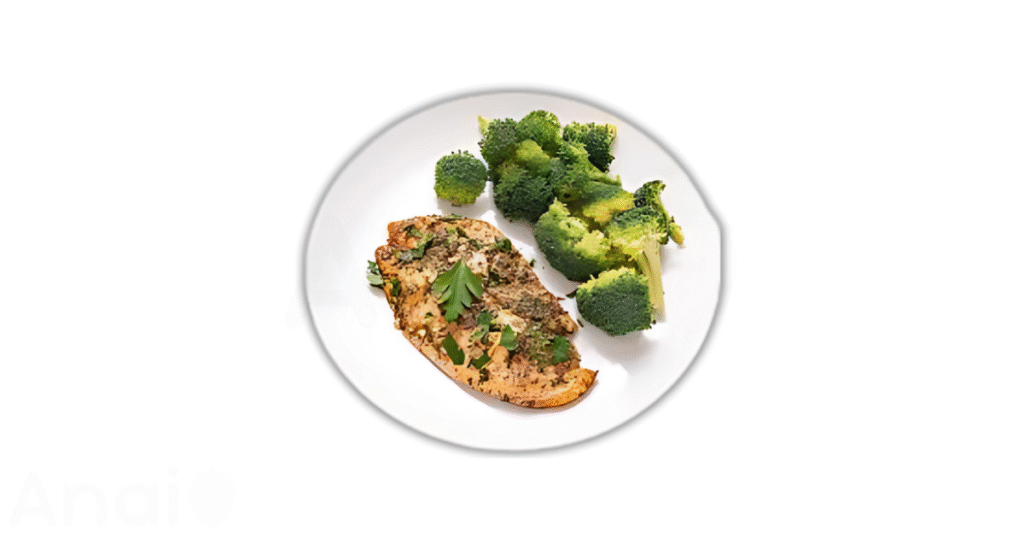
These simple recipe ideas can help you effortlessly increase your catfish intake without compromising on flavor or spending hours in the kitchen.
Breakfast ideas with catfish
Southern-style catfish and grits can be a hearty and satisfying start to your day. Use leftover blackened or baked catfish, flake it, and serve it over a bowl of creamy, warm grits. Top with a sprinkle of fresh herbs for a savory and protein-packed breakfast.
Lunch ideas with catfish
Crispy catfish Po’ Boys are a classic Southern sandwich. Place a fried or air-fried catfish fillet on a toasted baguette and top with lettuce, tomato, pickles, and a spicy remoulade or Cajun mayo. For a lighter option, try blackened catfish tacos. Fill warm corn tortillas with grilled or blackened catfish and top with a fresh cilantro-lime slaw for a quick and vibrant meal.
Dinner ideas with catfish
Cornmeal-crusted catfish is a timeless dinner entrée. Serve the crispy fillets with classic sides like coleslaw, hush puppies, and a squeeze of fresh lemon. For a more elegant meal, catfish piccata offers a zesty and bright flavor profile. The sauce, made from white wine, lemon juice, and capers, perfectly complements the mild fish and is ready in under 30 minutes.
Simple tips to add catfish to your diet
For those with a busy schedule, adding catfish to your meals doesn’t have to be complicated. Here are a few simple tips:
- Toss leftover flaked catfish into a green salad for a quick protein boost.
- Use cooked catfish as a filling for wraps or quesadillas.
- Mix flaked catfish with mayonnaise, celery, and onions to create a simple fish salad for sandwiches.
- Add chunks of catfish to soups, stews, or gumbos during the last few minutes of cooking.
- Use grilled or baked catfish as the protein for your leftover meals.
Catfish Storage Tips
Knowing how to cook catfish is only part of the equation. The importance of knowing proper catfish storage tips cannot be overstated, as it ensures those meals are safe, fresh, and last for longer.
Shelf life of catfish
- At room temperature: Fresh, raw catfish should not be left at room temperature for more than two hours.
- In the refrigerator: Properly stored raw catfish will last for 1 to 2 days. Cooked catfish leftovers can be kept for 3 to 4 days.
- In the freezer: When frozen correctly, raw catfish can maintain its quality for about 6 to 9 months.
How to store catfish?
Proper storage begins the moment you purchase the fish. The key to maintaining the freshness of catfish is to keep it cold and limit its exposure to air. As soon as you get home, it should be either refrigerated or frozen immediately.
If you plan to cook the catfish within a couple of days, refrigeration is sufficient. For longer-term storage, freezing is the best method to preserve its flavor and texture. Always ensure the fish is sealed tightly to prevent freezer burn and odor transfer to or from other foods.
How to refridgerate catfish?
To maximize freshness, refrigerate catfish fillets by following these simple steps:
- Gently pat the catfish fillets dry with a paper towel to remove excess moisture.
- Wrap each fillet tightly in plastic wrap or place them in an airtight container or a resealable plastic bag, pressing out as much air as possible.
- Place the wrapped fish in the coldest part of your refrigerator, which is typically the bottom shelf or a designated meat drawer.
How to freeze catfish?
For long-term storage, freezing is the best way to preserve the quality of your catfish:
- Pat the fillets completely dry with a paper towel.
- Wrap each fillet individually and tightly in plastic wrap.
- For extra protection against freezer burn, wrap the plastic-wrapped fillets in a layer of aluminum foil or place them inside a heavy-duty freezer bag.
- Label the package with the date before placing it in the deepest part of your freezer.
Signs of Spoilage in catfish
It is crucial to recognize the signs of spoilage to avoid foodborne illness. Discard any catfish that shows the following signs:
- A strong, fishy, or ammonia-like odor.
- A slimy, sticky, or milky-white film on the flesh.
- A dull, faded, or discolored appearance.
- A soft or mushy texture when pressed.
8 Remarkable Catfish Home Remedies
Are there any less-known tips to unlock the nutritious profile of catfish? The following at-home remedies, derived from handling and consuming the fish, can have a positive effect on overall well-being.
- Soothing a Catfish Sting: Both freshwater and saltwater catfish have sharp spines that can deliver a painful sting. Immersing the affected area in water as hot as you can comfortably tolerate is the primary home treatment to relieve the severe pain from the venom (Selemin, 2024).
- Removing a Stuck Spine: If a piece of the catfish’s defensive spine breaks off in the skin after a sting, it should be carefully removed. Use a clean pair of tweezers to gently pull the spine out of the wound to prevent further irritation and infection (Snyder, 2023).
- Managing Minor Pain from Stings: The pain and inflammation from a catfish sting can be managed with over-the-counter pain relievers. Taking acetaminophen every 4 hours or ibuprofen every 6-8 hours can help reduce discomfort (Cunha, n.d.).
- Dislodging a Swallowed Fish Bone with Soft Food: If a small catfish bone gets stuck in your throat, swallowing something soft and sticky can help dislodge it. Try chewing a large marshmallow or a bite of banana just enough to soften it, then swallow it in one big gulp. The sticky texture can grab the bone and carry it down (Snyder, 2023).
- Using a Natural Lubricant for a Stuck Bone: A simple and effective method for a stuck fish bone is to swallow a natural lubricant. Swallowing 1 or 2 tablespoons of olive oil can coat your throat and the bone, making it easier to either swallow it or cough it up.
- Breaking Down a Bone with Acidity: Vinegar’s acidic nature may help soften a stuck fish bone. Try diluting two tablespoons of apple cider vinegar in a cup of water and drinking it. This can sometimes help dissolve the bone enough to make it pass more easily.
- Applying Gentle Pressure with Bread: A classic trick involves using bread to push a stuck bone down. Soak a piece of bread in water for a minute, then swallow the large, heavy piece. The weight can help dislodge the bone and move it toward the stomach (Snyder, 2023).
- Creating a Powerful Homemade Catfish Attractant: For anglers, a simple home remedy to attract more catfish is to create a potent bait. A very effective, though pungent, recipe involves blending 1 pound of aged chicken livers with one package of hot dogs. This mixture can then be combined with breadcrumbs or flour to create a dough-like bait that catfish find irresistible (Ferguson, n.d.).
Catfish and Weight Management

There are multiple health benefits and home remedies using catfish, but what is their role in weight management? This section will analyze catfish’s potential impact on weight loss, low-calorie diets, satiety, and metabolism.
Can catfish help with weight loss?
Yes, catfish can be a valuable tool for weight loss. Its high protein and low-calorie nature makes it an ideal food for those looking to shed pounds. As noted in a Healthline article, nutrient-dense protein sources like catfish can aid weight loss by promoting feelings of fullness, which helps reduce overall calorie intake. The website Mealpro also highlights that baked catfish recipes can easily be adapted for a weight-loss diet by pairing them with low-carb sides like a leafy green salad (Mooney, 2018).
Catfish in low-calorie diets
Catfish fits perfectly into low-calorie diets. With only 105 calories per 3.5-ounce (100-gram) serving, it provides a substantial amount of nutrients without a high caloric cost (Snyder, 2023). This is significantly lower than many other proteins. For instance, the same serving of salmon contains over 230 calories. This low-calorie density allows for larger, more satisfying portions without derailing a calorie-controlled eating plan.
Catfish and satiety
The high protein content of catfish is key to its effect on satiety, which is the feeling of being full and satisfied after a meal. Protein is the most satiating macronutrient. A 100-gram serving of catfish provides about 18 grams of protein, which helps to curb hunger and prevent overeating later in the day. A study cited in Healthline found that higher protein intake is directly linked to increased feelings of fullness, making high-protein foods like catfish essential for appetite control.
Catfish and metabolism
While not a “metabolism-boosting” food in the magical sense, catfish supports a healthy metabolism through its nutrient profile. The high protein content requires more energy for your body to digest—a phenomenon known as the thermic effect of food (TEF)—which can slightly increase metabolic rate. Furthermore, catfish is a good source of B-vitamins, such as thiamine (15% of the DV per 100g) and Vitamin B12 (121% of the DV), which are essential for converting the food you eat into usable energy (Selemin, 2024).
Catfish for Health Conditions
While weight management is important, do catfish have an effect in more serious health conditions? Here’s what the scientific literature has to say:
Catfish and diabetes
Because catfish contains zero carbohydrates, it does not raise blood sugar levels, making it an excellent food choice for individuals managing diabetes. Its high-protein content also helps promote satiety and can be part of a balanced meal plan designed to regulate glucose. A diet rich in lean protein, like that found in catfish, is often recommended for blood sugar control.
Catfish and heart health
The omega-3 fatty acids in catfish are highly beneficial for cardiovascular health. These healthy fats help reduce inflammation, fight oxidative stress, and regulate blood cholesterol levels (Spandana, n.d.). Research has linked fish consumption directly to heart health. A review of 23 studies involving over one million people found that eating fish was associated with an overall lower risk of death, with a 7% reduction in mortality for every 200 mg of omega-3s consumed daily (Snyder, 2023).
Catfish and digestive issues
The impact of catfish on digestive health is twofold. On one hand, omega-3 fatty acids are linked to improvements in the gut microbiome, which is the collection of healthy bacteria in your gut that is essential for proper digestion (Snyder, 2023). On the other hand, some research suggests that excess consumption of omega-6 fatty acids, which catfish contains in higher amounts than omega-3s, may increase the risk for inflammatory bowel disease (Spandana, n.d.). Therefore, moderation is key.
Catfish and inflammation
Catfish contains both anti-inflammatory omega-3s and pro-inflammatory omega-6 fatty acids. A healthy balance of these fats is crucial. While omega-3s work to reduce inflammation throughout the body, an excessive intake of omega-6s, common in Western diets, can have the opposite effect. Because catfish has more omega-6s than omega-3s, individuals with chronic inflammatory conditions like arthritis may be advised to limit their intake.
Catfish and cancer prevention
The omega-3 fatty acids found in catfish may play a role in cancer prevention. Some research suggests that these healthy fats can help inhibit the processes that lead to certain types of cancer (Selemin, 2024). While the evidence is still developing and more studies are needed, incorporating sources of omega-3s like catfish is a positive step in a balanced, health-conscious diet.
Overall, the scientific evidence suggests that the nutrient profile of catfish, particularly its omega-3 and vitamin content, offers tangible benefits for heart and brain health, though its fatty acid ratio requires consideration for inflammatory conditions.
| Health Category | Benefits | Type of Study | Quality of Evidence | Sources |
|---|---|---|---|---|
| Heart Health | Reduced risk of mortality, improved blood clotting and vessel function. | Systematic Review & Meta-Analysis | Strong | Snyder (2023), Selemin (2024) |
| Brain Health | May help treat neurological and mental conditions like depression and ADHD. | Multiple studies (unspecified) | Moderate | Joseph (2022), Spandana (n.d.) |
| Inflammation | Omega-3s reduce inflammation, but high omega-6 ratio can be pro-inflammatory. | General scientific literature | Moderate | Spandana (n.d.) |
| Cancer Prevention | Omega-3s may help prevent certain cancers. | General research (unspecified) | Preliminary | Selemin (2024) |
| Digestive Health | Omega-3s support a healthy gut microbiome. | General research (unspecified) | Preliminary | Snyder (2023) |
A Final Reflection on Catfish Nutrition
From its impressive nutritional value to its diverse uses in the kitchen, catfish is a noteworthy addition to a healthy diet. This article has covered the 12 functional health benefits of catfish, its detailed nutrition facts, potential risks and side effects, and suitable substitutes. We’ve also explored popular catfish diets, proper storage tips, 8 remarkable home remedies, the role of catfish in weight management, and its potential impact on various health conditions.
Here are a few of the most interesting facts about catfish:
- A single 3.5-ounce serving of catfish provides 121% of your daily Vitamin B12 needs.
- Wild-caught catfish is one of the best food sources of Vitamin D, with a single fillet containing 181% of the daily recommended intake.
- It is one of the safest fish regarding heavy metals, with an average mercury content of just 0.024 PPM.
- The way you cook catfish matters—deep-frying can add up to 124 calories and over 10 grams of fat compared to baking.
- Most U.S. farm-raised catfish are fed a vegetarian diet of grains, giving them a consistently mild and clean flavor.
This content was last updated in December 2025 to ensure you have the most current information.
Ready to take control of your health with science-backed insights? Follow Anai.ai to stay informed about the latest nutrition and well-being news, tips, and articles.
Catfish Nutrition FAQs
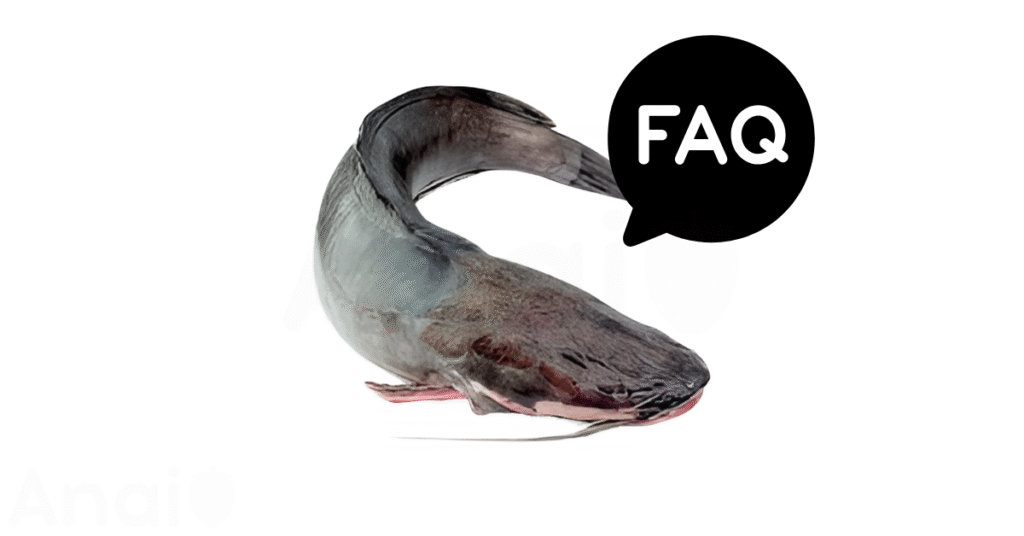
Have more questions about catfish? You’re not alone. This section provides clear, science-backed answers to some of the most common questions about catfish nutrition, safety, and storage.
Get the straightforward facts you need.
What is catfish good for?
Catfish is excellent for building lean muscle, supporting brain function, and maintaining strong bones. A single 100-gram serving provides 18 grams of high-quality protein and is packed with essential nutrients. It is particularly good for boosting vitamin intake, as it contains 121% of the Daily Value (DV) for Vitamin B12, and wild-caught varieties can offer a remarkable 181% of the DV for Vitamin D.
Is catfish healthy?
Yes, catfish is a very healthy fish choice due to its dense nutrient profile and low contaminant levels. In addition to being a great source of lean protein and healthy omega-3 fatty acids, it is also low in mercury, earning it a spot on the FDA’s “best choices” list for fish consumption. A 100-gram fillet provides significant amounts of key minerals, including 24% of the DV for phosphorus and 26% of the DV for selenium.
Is catfish fattening?
No, catfish itself is not fattening and is considered a lean protein. A 3.5-ounce (100-gram) serving contains only 105 calories and about 2.9 grams of fat. However, the cooking method drastically changes its nutritional profile. Deep-frying can add over 120 calories and 10 grams of fat, making the meal fattening, whereas baking or grilling it preserves its lean qualities.
Who should avoid catfish?
Individuals with a fish allergy should completely avoid catfish to prevent potentially severe reactions. People with chronic inflammatory conditions like arthritis may also want to limit their intake. This is because catfish has a higher ratio of omega-6 to omega-3 fatty acids, and a diet high in omega-6s can sometimes be pro-inflammatory.
Can I eat catfish daily?
While catfish is healthy, eating it every day is not recommended as part of a balanced diet. The USDA dietary guidelines suggest consuming up to 8 ounces of low-mercury fish, like catfish, per week. A varied diet is essential to ensure you get a wide array of nutrients from different food sources, and daily consumption could lead to an imbalanced intake of fatty acids.
Can dogs eat catfish?
Yes, dogs can eat catfish, but it must be prepared correctly. The fish is a good source of protein and omega-3s for dogs, but it must be cooked thoroughly, completely deboned, and served plain. Raw catfish can harbor harmful bacteria, and the bones pose a serious choking hazard, while fried or seasoned preparations contain unhealthy fats and ingredients that are not suitable for dogs.
Can cats eat catfish?
Yes, cats can eat catfish, but only in moderation and when it’s prepared properly. The fish must be cooked thoroughly and served plain without any seasonings, salt, or oils, as these can be harmful to cats. It is crucial to remove all bones to prevent choking or internal injury, and you should never feed your cat raw catfish due to the risk of Salmonella and other harmful bacteria.
How long does catfish last in the fridge?
Properly stored raw catfish will stay fresh in the refrigerator for 1 to 2 days. If you have cooked catfish leftovers, they can be safely kept in the fridge for 3 to 4 days. To maximize freshness, store the fish in an airtight container or a sealed plastic bag in the coldest part of your refrigerator, ideally below 40°F.
Can you freeze catfish?
Yes, you can absolutely freeze catfish to extend its shelf life significantly. When properly wrapped to prevent freezer burn, raw catfish can maintain its best quality for about 6 to 9 months in the freezer. For optimal results, wrap the fillets tightly in plastic wrap and then place them in a heavy-duty freezer bag before freezing.
How to tell if catfish is bad?
You can tell if catfish is bad by using your senses. Spoiled catfish will typically have a strong, unpleasant fishy or ammonia-like odor, which is the most reliable indicator. Other signs include a slimy or sticky film on the flesh, a dull or discolored appearance instead of a vibrant white, and a texture that is mushy rather than firm.
How long is catfish good for?
The shelf life of catfish depends entirely on how it is stored. It should not be left at room temperature for more than 2 hours. In the refrigerator, raw catfish is good for 1 to 2 days, while cooked catfish lasts for 3 to 4 days. If frozen at 0°F, it can last for up to 9 months without a significant loss in quality.
How to keep catfish fresh?
To keep catfish fresh, store it at a cold temperature immediately after purchasing. For refrigeration, pat the fish dry, wrap it tightly in plastic wrap or place it in an airtight container, and store it at the back of the fridge where it’s coldest. For longer storage, freezing it while it is at peak freshness is the best method to preserve its flavor and texture.

